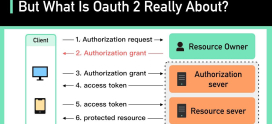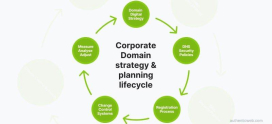
A Deep Dive into a Successful Website Transfer: What You Need to Know
Have you ever faced the daunting task of transferring your website to a new host or platform? If so, you’re not alone! Many of us are overwhelmed by the technicalities involved in website transfers, leading to sleepless nights, frustration, and a whole lot of confusion. Will my site go down? Will I lose my precious data? What about my SEO rankings? These are genuine concerns that can make anyone hesitate. The good news? You can navigate this process smoothly with a little knowledge and preparation.
In this article, we’ll take a deep dive into the essential steps you need to follow for a successful website transfer. You’ll gain insights from experts, real-life case studies, and practical tips to ensure your transition is as seamless as possible. By the end, you’ll feel empowered and ready to tackle your website transfer like a pro!
Understanding Website Transfer: What Is It?
At its core, a website transfer involves moving your website from one server to another or from one domain to a different one. Think of it as relocating your house to a new neighborhood—your content remains the same, but the infrastructure is different. While it may sound simple, many moving parts can complicate the process if not handled properly.
Why Transfer Your Website?
Common Reasons for Transferring
Transferring your website might seem like a big leap, but sometimes it’s the best choice. Here are some typical motivations:
- Better Performance: You might want to migrate to a host with improved speed and uptime.
- Enhanced Security: Switching to a provider that offers superior security features can protect your data better.
- Better Support: If your current provider lacks customer support, it can lead to endless frustrations.
- Cost Efficiency: Finding a better deal without compromising on features is always attractive.
- More Features: New hosting services may offer enhanced functionalities that fit your growing needs.
Key Features to Look for in a New Host
Before jumping into the transfer process, it’s crucial to choose the right hosting provider. There are various features you should look for:
- Security Measures: Opt for hosts that provide SSL, backups, and strong firewall protections.
- Customer Support: 24/7 support can save you countless headaches during crises.
- Scalability: Choose a host that can grow with your website.
- Migration Assistance: Some hosts assist in migration, reducing your load considerably.
- Uptime Guarantee: Look for a host that offers at least 99.9% uptime. Every minute counts!
Preparing for a Successful Website Transfer
Preparation is key to making the transfer process smooth. Here’s how to get started:
1. Create a Backup
Your first step should be to create a complete backup of your website. This is like packing your belongings before moving to a new home. A reliable backup ensures you won’t lose anything important during the transfer. Use plugins or tools that can help, such as WordPress Backup or BlogVault.
2. Document Your Current Setup
Documenting your existing setup will help you keep track of your files, databases, and settings. Make a list of all essential details, including DNS settings, configurations, and installed plugins. This documentation will serve as your moving checklist!
3. Choose Your New Host
Take your time selecting your new host. Comparing various providers like DarazHost based on the features mentioned above can guide you toward the right choice. Read user reviews and check their performance metrics before deciding.
4. Verify Your New Host
Once chosen, ensure your new host is properly set up. This is like making sure your new house is ready to move into. You should have a new domain or subdomain set up, and any required software configured.
The Transfer Process: Step by Step
Now comes the moment of truth! Here’s how to execute your website transfer:
1. Transfer Files
Start by transferring your website files from the old host to the new one. You can use FTP client software such as FileZilla or conduct this through your hosting control panel. This step requires a little technical knowledge, so it may feel like lifting heavy furniture. Don’t worry; it gets easier from here!
2. Migrate the Database
If your website uses databases (like WordPress), you’ll need to export and import them as well. Tools like phpMyAdmin can help manage this process efficiently. This can sound complex, but think of it as moving small boxes of books instead of a hefty mattress—much more manageable!
3. Adjust DNS Settings
After transferring your files and databases, update your DNS settings to point to your new host. This step is crucial, as it’s how visitors will reach your site after the move. It’s like giving out your new address—make sure it’s clear!
4. Test Your Website
Once everything is moved, conduct thorough testing to ensure that your website functions properly on the new host. Check various browsers and devices for compatibility. It’s like ensuring all your outlets work on day one in your new home!
Post-Transfer Considerations
The road doesn’t end after the transfer! Here are some things you should take care of:
1. Monitor Performance
Keep an eye on performance for at least a few weeks. Look for load times, downtime, and any error messages. It’s vital to ensure your new host meets your expectations.
2. Optimize SEO Settings
Revisit your SEO settings to confirm that everything is intact after the move. Check permalinks, redirects, and monitor traffic to catch any dips that may arise post-transfer. Think of this as auditing your new environment to ensure everything is functioning smoothly.
3. Communicate with Visitors
If you anticipate any downtime or significant changes, let your audience know in advance. An email or a notice on your current site can help set expectations. Transparency fosters trust!
Real-life Case Study: A Successful Transfer
Let’s explore a success story for added inspiration. A small e-commerce website faced growing pain points with its current host, specifically with load times and lack of support. They opted to switch to DarazHost after researching their offerings.
By following the backup, documentation, and migration processes outlined above, they seamlessly transferred their site. They tackled initial challenges by reaching out to customer support for help and learned to manage their database effectively. Within weeks, they not only improved their website performance but also experienced an uptick in user engagement thanks to faster loading times. The simplicity of setup was the cherry on top!
FAQs
What is a website transfer?
A website transfer is the process of moving your website files, databases, and domain from one hosting service to another or from one domain to another.
Why should I consider transferring my website?
You may want to transfer your website for reasons like better performance, enhanced security, improved customer support, or cost savings.
How do I back up my website before the transfer?
Backup your website using plugins or manual methods like exporting your database and downloading your files via FTP.
Will my website go offline during the transfer?
There may be some downtime, but carefully managing DNS settings and timing the migration can minimize this.
How long does a website transfer take?
The time It takes to transfer a website can vary significantly depending on the size of your website, the complexity of your setup, and the methods you use. Generally, a basic transfer can take anywhere from a few hours to a couple of days. Planning and executing the steps carefully will help ensure a timely transfer.
What should I do if I encounter issues during the transfer?
If you encounter issues during the transfer, reach out to your new host’s customer support for assistance. They can provide guidance tailored to their platform. Additionally, referring to documentation or communities related to your website platform (like WordPress forums) can offer troubleshooting steps.
Conclusion
Transferring your website might seem overwhelming at first, but with the right preparation and knowledge, you can make the process as smooth as possible. Remember to backup your site, choose a reliable host, and document everything along the way. Overcoming the challenges of a site transfer not only prepares you for the move but ultimately leads to better performance, security, and support for your online presence. Now that you’re equipped with essential tips and insights, you’re ready to take the plunge confidently. Good luck with your website transfer!









